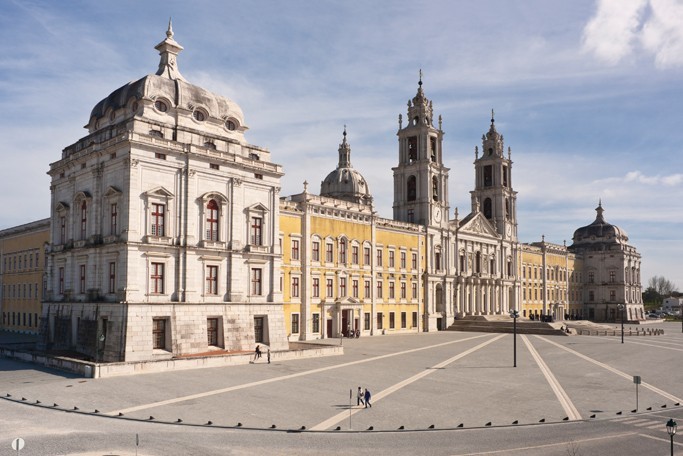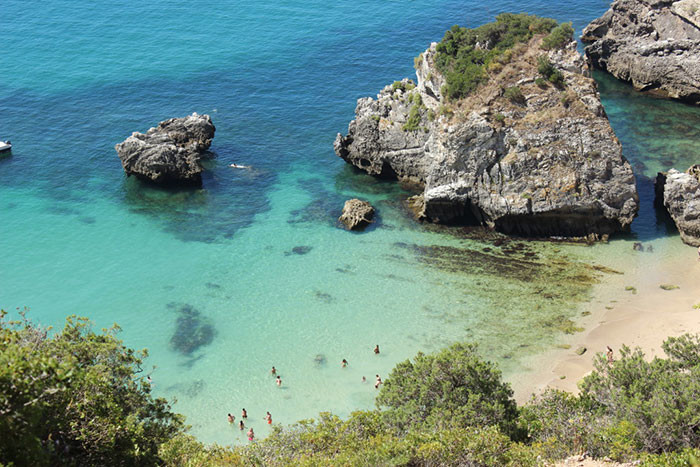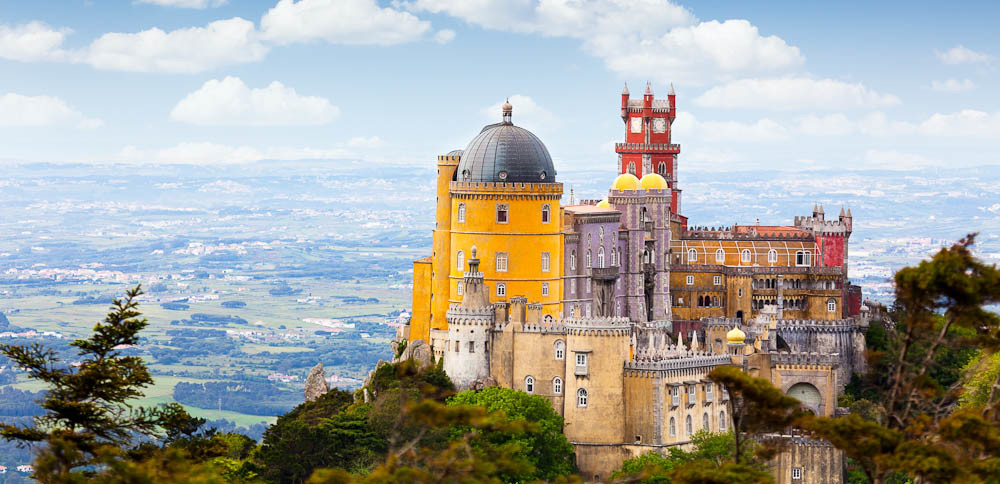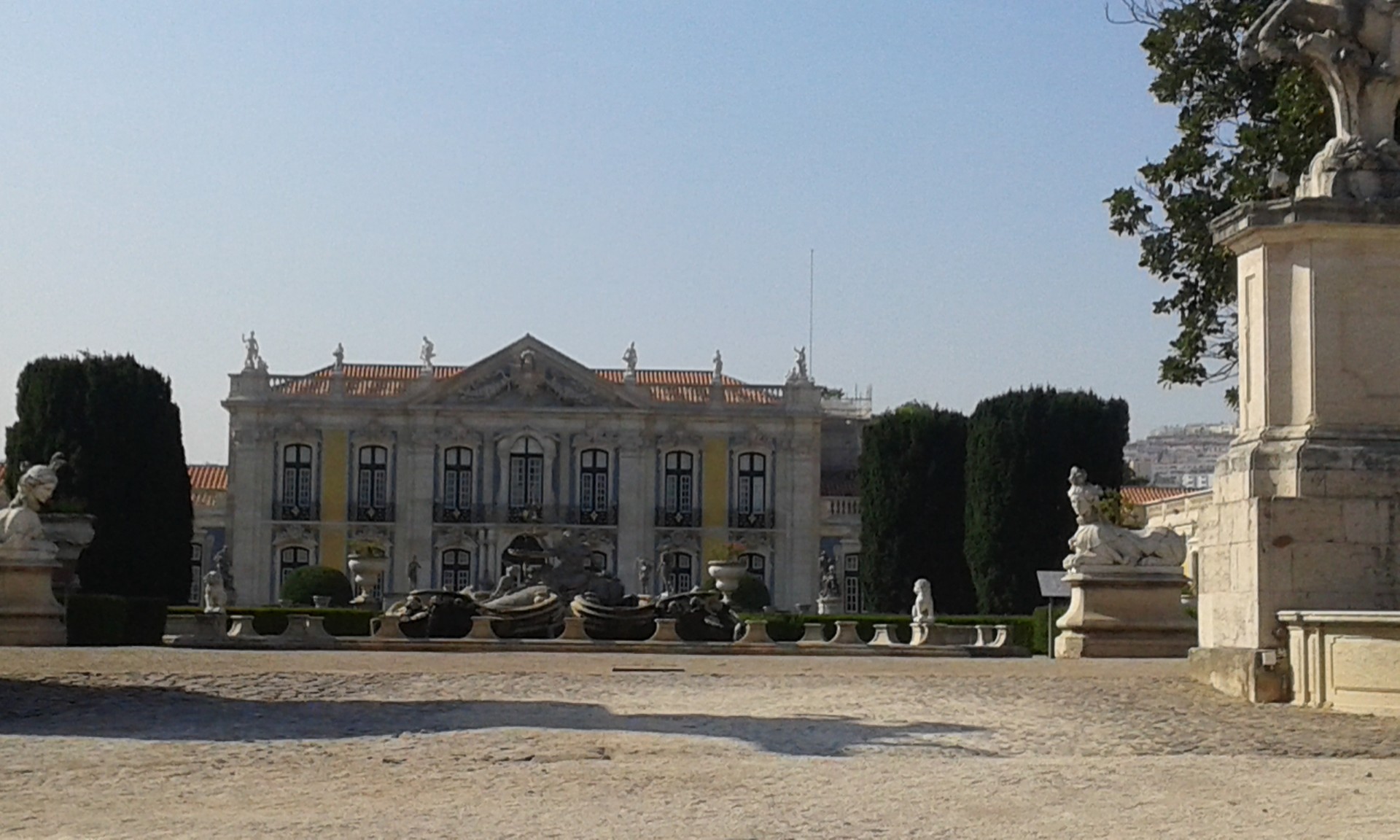10 places to visit in Lisbon's neighbourhoods, #1st Part !!
Lisbon is a beautiful city, and any student that arrives here, to do Erasmus, will find out that he(she) has a lot to discover and to admire in the first months, and without even leaving the city centre - which has been very well preserved, and now deserves to be seen more calmly, because here you will find jewels in every corner.
However, once settle down, and maybe "too much hungry", there are a lot of things that deserves a visit in the Lisbon's neighbourhoods, and these things don't need to much planning nor money. These are visits that you can do in a day, with direct public transport (or at least almost directly), from the city centre, and they are the ideal getaway on a weekend away from the hustle and bustle of city life.
I had the pleasure to grow up near of some of this places, since by parents always had the wish of living in the Lisbon's suburbs, around 30 kilometres away. Therefore, a lot of this places I already visit several times, so I know them really well. This places are not touristic, but without any doubt they reflect the culture, the traditions and the beauty of the Portuguese landscape. There is a lot to learn with this little villages, and nothing like a visit to see how is the daily life outside the big city. Attention: some of this places are really breathtaking, so for the ones that are more sensitive, or have heart problems, be more carefully.
1 - National Palace of Mafra, in Mafra:
This place is really special in my heart! Not just because is the ex-libris of the where I grew up, but also because it was the place of my first job (I had the amazing opportunity to be tour guide and vigilant, during one of my summer breaks, when I was still a Architecture's freshman).

The county of Mafra it was grow up a lot, nowadays is already a big city. There is nature near of Lisbon! The National Palace of Mafra is the biggest example of Baroque Architecture in the entire country, everything thanks to the King D. João V, that in his desperation to ascend the throne, he promised to his wife, if she got pregnant he would build a monumental palace. And the Palace reminds all the biggest European models of the Baroque Palaces, like the Palace of Versailles, in Versailles, Paris, in ordered to be built by the magnanimous Sun-King.
It's a huge site, and a really interesting masterpiece, for those who are looking for to learn more about the country's history, as also the transition from Monarchy to Republic (because it was here that the last King, D. Manuel II, spent his last night, before exiling on the island of St. Helena, catching a boat with his mother in the small port of Ericeira, which is a few kilometres away).
A big part of the palace can be visited, and if you visit it you can see the furniture from that time, both the King and the Queen. The area of the convent is closed, and it only open sporadically, because this part is army's competency.
It is also worth to see one of the theatrical productions that take place in the Palace (like the "O Memorial do Convento", one Portuguese books that is known for the Nobel prize that was given to the writer, José Saramago).
This is a visit that takes about 2 hours, because it's a visit that allows you to take your time, in order to enjoy every peace of the Palace. Once per day, it's possible to have a guided tour with one of the employees of the Palace. You need to pay for this, besides the entrance ticket, but it's a small price. Besides the Palace, you can also visit the Big Basilica (for free) and their famous "carrilhões" (large bells that make themselves heard when sounded! ).
Another high point, that takes place at the end of the payed tour, it's the Library. Usually mentioned as one of the prettiest in Europe, is the owner of a gigantic estate, only possible due to royal house donations to the monks. In the upper floor of the Library, there is a bookshelf, with the forbidden books. This was the place where the catholic church used to save the "forbidden books", according to the Index - a document that reported on banned books.
Mafra it's a windy place, so I would recommend you to bring a cardigan, even if you come during the Summer. In the neighbourhoods there are other places that you should visit, for example, the beach of Ericeira, the Tapada Nacional of Mafra (The National Hunting Grounds of Mafra) and the Museum of José Franco, in the Sobreiro's Village, that is just a few kilometres away. All this places are perfect for a programme for the all day or even to a weekend.
When to visit? Every day, except Tuesdays, from 9h30 am. until 5h30 pm.. The last entrance is one hour before the place closed.
The price? It costs 6 euros (but you can get age or student discounts, like 50%). In the first Sunday of the month, the entrance is for free.
2 - Ribeiro do Cavalo's Beach, in Sesimbra:
Sesimbra stays on the other side of Tejo's River, and it used to be a fisherman's village; nowadays it's a suburban refuge of those who work in the capital, but it stills remains it's quite with the sea and the green areas. The Portuguese shore it's huge, and we have thousands of beaches, that according to my point of view, they deserve to be talked. However, this beach is a unique beauty, kind of hidden and also with hard access.

It's said that the beach has this name, because there is a big rock that looks like a head of an equine. To arrive here you have to come on foot, and you have to come from a strategic point, so I wouldn't advise to take with you big things. And the path it's not accessible to people with reduce mobility.
The crystalline waters with a vibrating blue, and the selvage sand, ends to effort it all the walk that you had to do. I would recommend to go a day - take some food with you, because in the neighbourhood you will not find anything to purchase, but his way you can enjoy better the beauty of the place, relax a bit, and if it's Summer take some sunbaths.
The beach is unguarded, so you should be careful with the sea, but besides that, nothing to worry about, the beauty and the charm of this place, that according to my experience this place lefts anyone surprised. If you need help to get to this place, just ask to the locals of Sesimbra, they are going to be really nice to you!
When to visit? Any time of the year, but specially during the hottest days, so you can go to the water and get some tan!
How much? Absolutely nothing, this is a public space!
3 - Pena's Palace, in Sintra:
Everything in Sintra, in fact, it is worthy of reference. It's one of the top destinations in the Lisbon's neighbourhoods, not just because of it's charmed - because the village looks like a fairy tail - but also because it's really well connect with Lisbon's city centre, by train, and the travel takes about 40 minutes to 1 hour.

Sintra's Village was immortalised by different artists and writers, that pass through here and that ended for falling in love with this magical village. Full of beautiful detailed and colourful houses on the seashore. One day is perfect to visit this place, that is full of places of interest, not only architectural ones, but also natural places.
Pena's Palace is located on the top of a hill, that belongs to Sintra's mountain range, requires some climbing, but that will be compensated with the amazing view from the top. It was build by the Prince Fernando, in the 19th century, he was the husband of the Queen D. Maria II. The Palace is a romanticist castle, and since the Prince was German, you can see different similarities with other German constructions, as for example the Castle of Neuchswanstein, in Bavaria. (They both look like from a Disney movie).
You can visit the inside, in order to appreciate the work that it's a masterpiece. They are a lot of rooms that are a truly exotic inspiration, and that represent so well other cultures, that one that time where extremely extravagant in Europe, but still remains a beauty and richness incomparable.
Yearly this is one of the most visited places of the country, so it'x extremely touristic. I would advise you to go early, and with already a purchase ticket, in order to avoid big an messy queues, and that way you can enjoy of a quiet and relaxing visit. During the Summer is when the Palace was more people. So go on a Autumn or Spring Day, when there isn't mist in the hillm that way you can walk peacefully and enjoy more of your walk.
Still in Sintra's village, don't forget to visit the Castle of the Moors, Quinta da Regaleira, the Palace of Monserrate and the Capuchos's Convent. To get your mouth sweeter, nothing like eating the traditional Queijada de Sintra in the coffee shop Piriquita (Website), it's close to the city centre.
When to visit? The Palace is open every day, from 10 am. until 6 pm., and only closes in the 25th of December and the 1st of January. Just wait for a clean day!
The price? The ticket to the Palace and to the Park costs 11, 50 euros (to adults, with a age range between 18 and 64 years old). The youngest or the oldest (+65 years old) only pay 9 euros. It's a little expensive, but it's one of those places that worth to visit at least once in your life!
4 - Cacilhas's pier, in Cacilhas:
The other side of the Tejo's river is often overlooked and undervalued. Although the historical part of the city being located in the north side of the river, the south side also has a lot to offer. At least a couple of hours to rest, to go to the beach, and to stay in an open esplanade, I guarantee that you will have it there.

Cacilhas is the village of the fishermen, where still a large part of the boats, that still cross the Tejo's River stop, transporting thousands of people daily to schools and workplaces.
Something that most of people tend to forget is that you don't need a boat of your own, because going with the public transport is as nice. The boats do a lovely route, during about 15 or 20 minutes, and while that you can enjoy of the panoramic view for the seashore, where you can see, for example, Belém's Tower and Monastery of Jerónimos froma privileged point.
From other side, there is nothing like trying one of those open esplanade, that are really next to the river, and are where it used to be the oldest port. The food that they serve in those places is amazing, specially the fish plates, and the prices range is not that high. There are a lot of boats coming during all day, and even more often during the weekends, so it's always easy to come back to Lisbon, without any effort and in a short period of time.
The boats have a interior room, used for when the weather is more rugged, but from the prow you can enjoy the way at open air, on a sunny day, but always with a hat and a cardigan, which snuggles in the splashes and in the the wind, that sometimes is a bit rough!
When to visit? Good weather days!
The price? Leaving from Belém, you just need to purchase your ticket in the machines that are in Gare Marítima, it costs around 1, 20 euros. But if you buy a return ticket it will cost you 2, 50 euros! The boat company is called "Transtejo", and in there Website you can check more about the schedules and the prices.
5 - National Palace of Queluz, in Queluz:
This is another place that deserves to the mention, and finally, last year, I had the change to go and visit it, before I went to Milan, for Erasmus. This is the perfect place for a Summer late afternoon, since besides the Neo-classic/Rococo Palace, you also have a huge gardens, that really deserves to be seen.

This photo was taken by me - in August of 2016.
This was the big last Palace to be built by the Portuguese Monarchy. It used to be a Palace for vacations, because it was so close to Lisbon, and it was all the time hosting members of the royal family, even when there were old and get crazy.
Recently was refurbished, so right now you can see it's beautiful and originals colours - the blue and the yellow - and in the inside you can visit it, just need to buy the ticket. It was built by the D. Pedro III, in the middle of the 18th century, and its construction last for many, many years, almost until the beginning of the 20th century.
Besides seeing the different royalty rooms, the visitors also can have the pleasure to see the personal items and also the original furniture that used to be part of the decoration.
The Palace is really fancy, but the gardens were what I like it more. Their scheme and the draws that they do are really complex, a mix between the French gardens really known, full of statues and little fountains and also their woods, that you can easily imagine that you are in some scene of a "Marie Antoinette" movie, but in an English style.
During some nights of the Summer you can go and watch some classical music concerts, but for those who are going to visit it during the day, there is a small coffee with a open esplanade with a view to the garden, that makes you feel like a little prince or princess, that is like admiring their possessions. I really recommend it!
When to visit? The Palace is open every day, from 10 am. until 6 pm., and the last entrance is one hour before they close the doors. The place just close on the 25th of December and the 1st of January.
The price? It costs 8, 5 euros to get in to the Palace (to adults, with a age range between 18 and 64 years old). The youngest or the oldest can get some discounts. I didn't find anything online, but I remember that when I visit it I found some promotions, because there are some hours of the day with less people, so the tickets can get cheaper.
Photo gallery
Content available in other languages
Want to have your own Erasmus blog?
If you are experiencing living abroad, you're an avid traveller or want to promote the city where you live... create your own blog and share your adventures!
I want to create my Erasmus blog! →




















Comments (0 comments)